Science
Frogs and Toads Together: Why do Amphibians Group Up?April 11, 2025

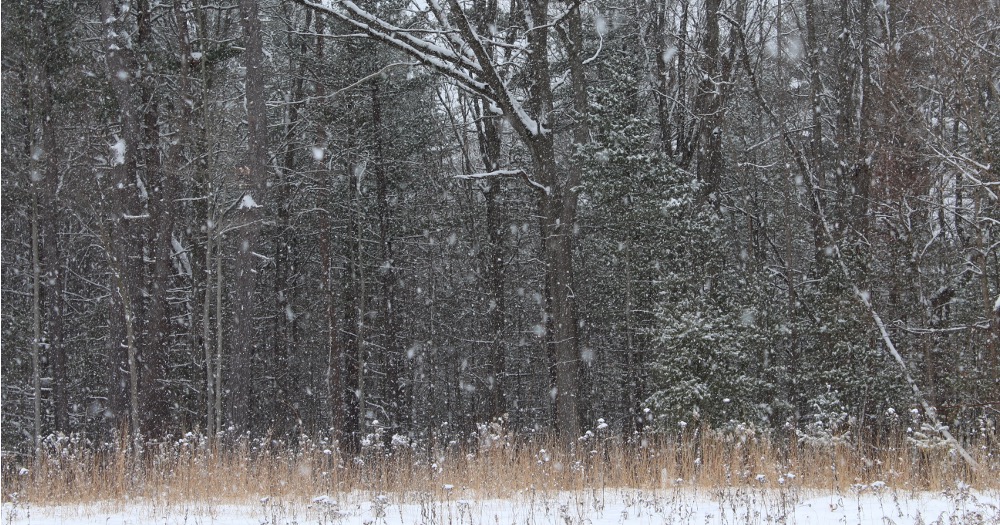
Teaching the season transition from fall to winter is a great way to continue the weather studies your kindergarteners or 3rd graders started at the beginning of the school year. Winter is unique in each region and will have its own set of weather patterns to be studied. By studying your local winter weather, your students are getting to use real-world application of knowledge as well as getting place-based learning opportunities. You’re also giving your students a chance to apply their science skills such as observing, science notebooking, writing and testing hypotheses, and analyzing data.
You’ll find in this article suggestions on how to introduce the winter season in an active way to your early childhood learners, information about winter weather and what it could look like, and how the season transition affects plants and animals.
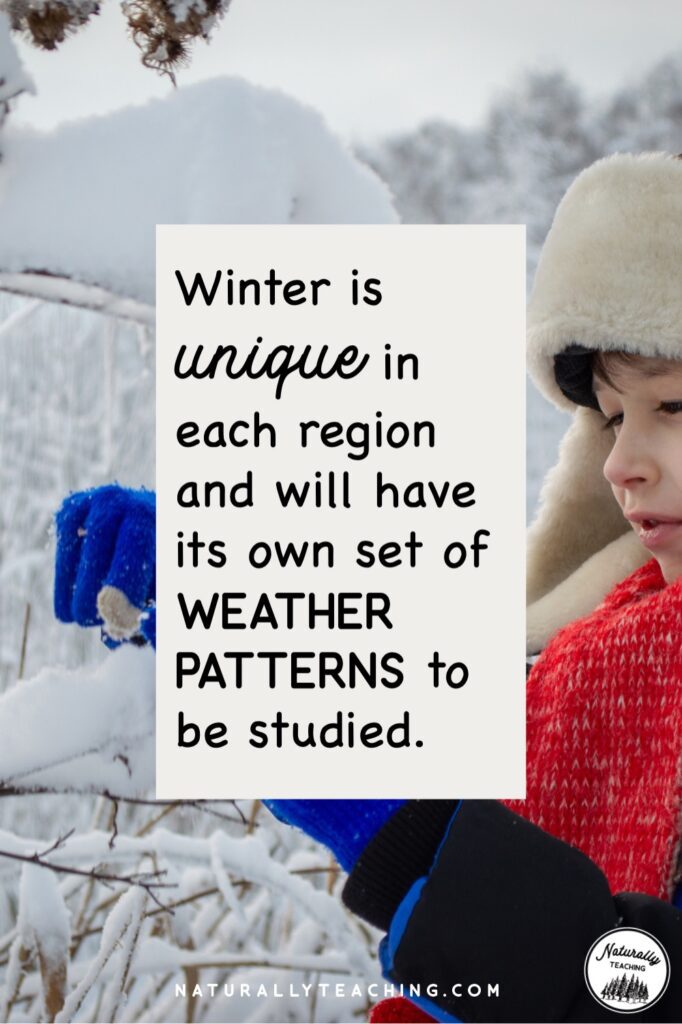
Don’t need all the info? Use this list to jump to the stuff you need:
What is the weather in winter?
How does the season transition to winter affect plants?
How does the season transition to winter affect animals?
When you are teaching the season transition to winter, it is best to start with how the seasons are made. (If you’re not sure how the seasons are made, check out this article “A Helpful Introduction for Teachers Teaching the Four Seasons in School”). When you start with an explanation of how winter is made, you provide your students background information to draw upon for your winter unit. You can introduce the season transition in an active way to help make this abstract concept easier to understand.
Find a large open space like an outside field or a gymnasium. Explain to your students that they are going to be playing three rounds of tag with different instructions for each round. For the first round, three people will start as “it” and everyone playing can run; if a person that is “it” tags someone else, they also become “it”. Play continues until everyone has been tagged. This round represents summer, a time with a lot of direct sunlight and heat. Your three “it” students represented the direct sunlight hitting the Earth during the summer season. Your students were running to stay away from the three “it” students so they should feel hot. Your job as the teacher is to time how long this round takes with a stopwatch or with an app on your phone.
For the second round, two people will start as “it” and everyone playing will jog. As before, if someone that is “it” tags someone else, they also become “it”. Play continues until everyone has been tagged. This round represents fall or autumn, a time with neither direct or indirect rays and mild temperatures. Your two “it” students represented the sunlight which is neither direct or indirect. Your students were working moderately hard by jogging to stay away from the “it” students, so they should feel a little warm. Make sure to time this round as well and ask the students if they thought the fall round was longer or shorter than the summer round.
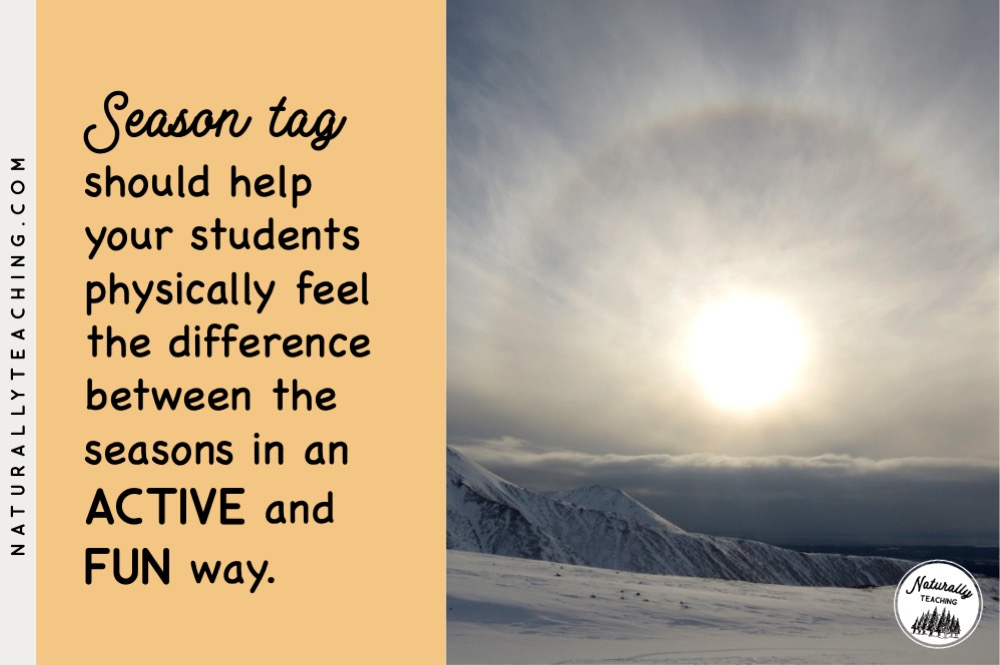
For the last round, there is going to be one person that is “it” and everyone playing can walk. As before, if the “it” person tags someone else they become “it” as well; play continues until everyone has been tagged or until you reach a certain amount of time (e.g. 5 minutes). This round represents winter, a time with indirect sunlight and lack of heat. Your single “it” student represented the indirect sunlight hitting the Earth during the winter season. Your students were not working very hard since they were walking and probably don’t feel warm. Make sure to time this round as well and ask the students how they thought this round compared to the previous two.
This tag game should help your students physically feel the difference between the seasons in an active and fun way. By having the number of “it” students represent how much direct or indirect sunlight the Earth experiences, your students can feel the energy of the game change based on the pressure of having more or fewer taggers. In summer, there is a lot of energy to go around and plants, animals, and humans are all active and taking advantage of it. In winter there is less energy and things move slower with fewer active organisms.
If you want to play your way through the set of four seasons, you could follow the fall rules to experience spring. Spring is another section of the year where there is not direct or indirect sunlight, causing mild temperatures.
Teaching winter is helpful to observe and identify weather patterns throughout the year in kindergarten and 3rd grade classrooms (NGSS K-ESS2-1 and 3-ESS2-1). After you teach your students the reason for winter, you can start to get into the weather of winter. Because there are indirect sun rays on the part of the Earth experiencing winter, the temperatures are the coldest of the year. Depending on the region, winter brings heavy rains or snow. Not every region will receive snow, but it is one of the most notable signs of winter and is depicted in a lot of movies and media.
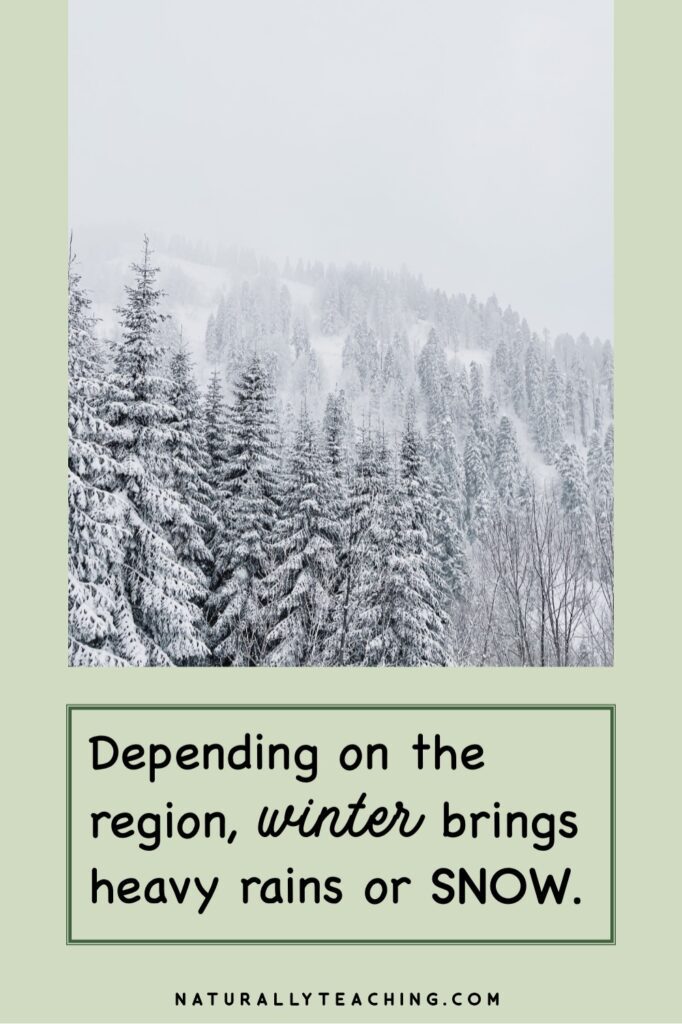
The season transition from fall to winter is easier on your students than the transition from summer to fall. However, it is still important to help your students understand what is appropriate outdoor gear for winter. One way to help your students remember what outdoor gear to bring for recess is by studying the weather each day at calendar or as part of their morning work. If you have jobs in your classroom, you could have a meteorologist who takes the weather data for the day. Another idea to study the weather each day would be to project a weather forecast onto the board as your students enter the classroom. This real-world data can also help them develop life skills that will play a part in their everyday lives as they get older.
After they have talked weather, help them think through the types of clothes that they would need in order to be comfortable outside (this also helps you so you don’t have kiddos complaining about being cold during recess). The picture book The Jacket I Wear in the Snow by Shirley Neitzel could be a good reminder for your students of helpful winter gear. It is read to the rhythm of “This is the House that Jack Built” so there is a lot of repetition that will help your students remember important outdoor clothing.
Teaching the season transition to winter can help your students understand why the plants around them look like they’re dead. Triggered by the reduced number of hours of daylight, the plants spent fall getting ready for winter. In winter, plants in the northern regions are subjected to freezing temperatures. If a plant’s cells were to freeze and rupture, it would die. To help prevent this from happening many plants have adapted overtime to survive the harsh season.
One way that plants have adapted to survive winter is to go into a dormant, or rest, state. This is what deciduous, or leaf bearing, trees do. In the fall they cut off food production and shed their leaves. They also move any leftover food from the top of the tree down into the roots where it will be stored as a starch until spring.
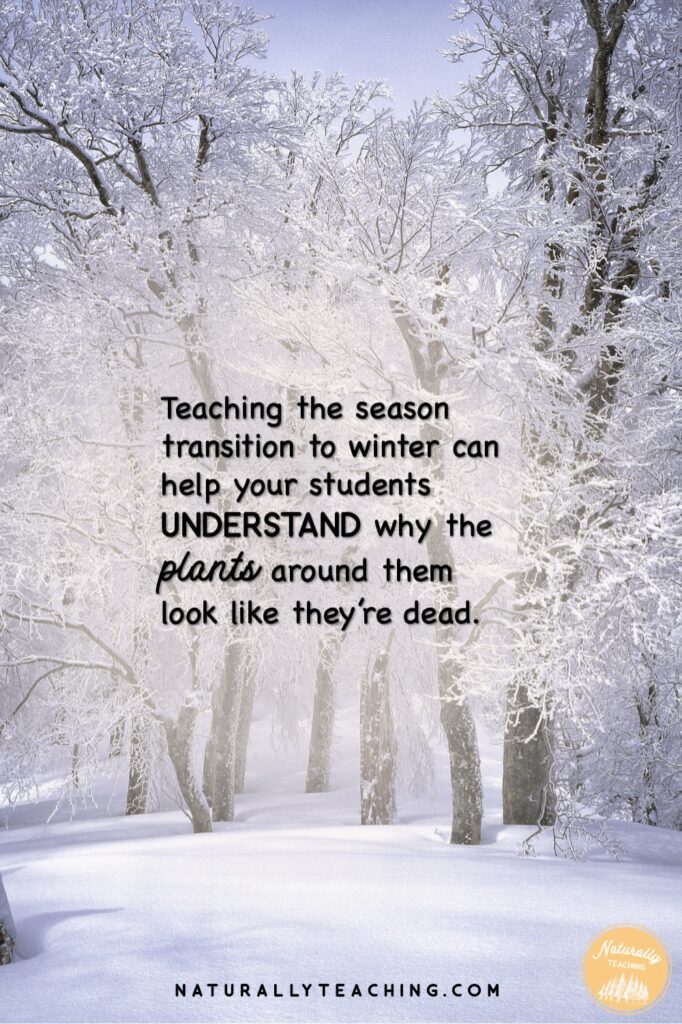
Another way that plants have adapted to perpetuate their species, is to flower and seed in the fall and then the adult plant dies. The seeds that spread will wait patiently until spring where they will sprout, grow, flower, seed, and die. The plants that rely on their seeds to take their species into the next year leave behind dead plant material that your students might be curious about. They can investigate these plant structures to see if they can find the seeds that will bring new life in the new year.
Teaching the season transition to winter can help your students understand what is happening to the animals around them. Animals, like plants, were triggered by the reduced hours of daylight to get ready for the harsh winter season.
Some birds in winter are living it up in warmer parts of the world. In the United States, birds that rely on insects, flowers, fish, and aquatic plants for food tend to migrate south to where those things are more easily found. There are some winters when there is an abundance of wild grapes and berries. When this happens, some birds will change what they eat rather than migrate; a choice that can save them energy. There are some birds that have unique adaptations to survive winter. The Black-capped chickadee, for example, works hard eating all day and when the sun goes down spends the night in a state of dormancy called torpor where their metabolic rates are decreased substantially. By lowering their metabolic rates to an extremely low level they are able to conserve their energy for survival. Even in this state of dormancy, there are nights so cold that these little birds use up all the fat they stored during the day just to get up in the morning and do it all again.
For many of the birds that remain active during the winter, shelter is taken amongst the evergreen trees. The needles on these trees help to block the winter winds and accumulate snow which insulates and maintains warmth. Some birds, like the Ruffed grouse, use snow banks to maintain heat for winter survival. These birds dive from flight into deep snow where they wiggle to create a small, insulated snow cave. They spend the cold nights in their snow den and emerge the next day to forage for food.
Winter is incredibly hard on insects. To help their species survive winter, insects have evolved a variety of different adaptations over time. Many insects will spend the winter sleeping in different life stages. A lot of people think about cocoons and chrysalises, but some insects will spend the winter as an adult tucked away in a tree cavity or under a log, like ladybird beetles (ladybugs). Some insects, like the Giant leopard moth, will spend the winter as a caterpillar in the leaves in a dormant state called diapause. Similar to hibernation, diapause is when an insect reduces its metabolic functions so low that they use very little energy.
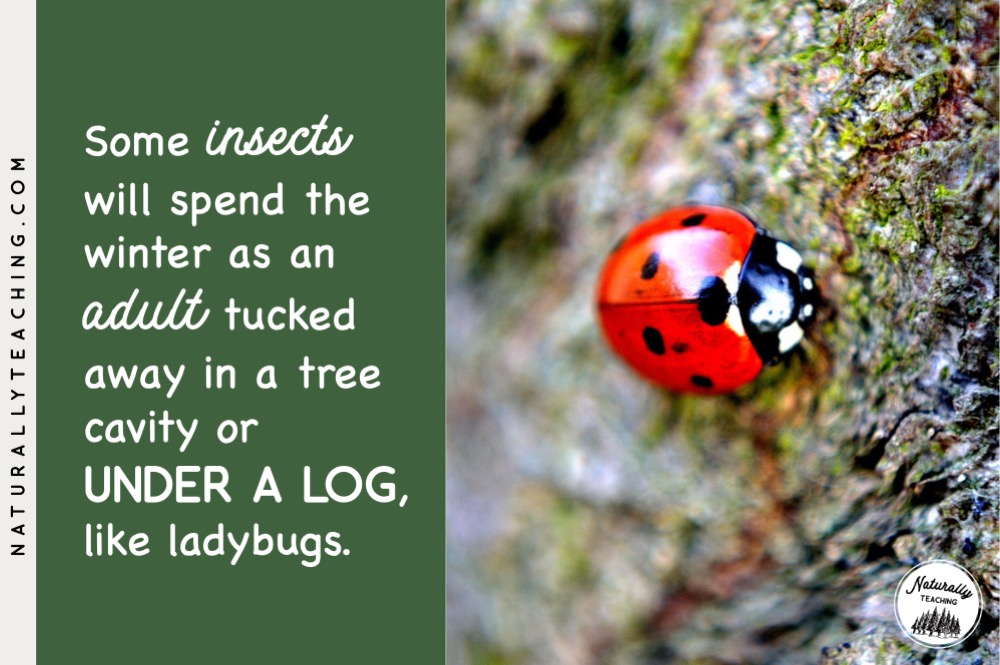
The Monarch butterfly is one of the few insects to migrate to a location with enough heat and food to be able to lay eggs and propagate the species. Some insects, like field crickets, accept their fate and leave a legacy of eggs to rough out winter in order to keep the species going. If you are able to find a copy of it, the book Not a Buzz to Be Found by Linda Glaser does an amazing job explaining and showing the different ways insects survive winter.
Reptiles and amphibians spend the winter in their dormant state referred to as brumation. Similar to hibernation, brumation is a state where the metabolic rates of these animals are so low that they use very little energy to keep themselves alive. During the fall, these creatures found their way below the frost line. During the season transition from fall to winter, forest reptiles and amphibians burrowed into the soil or found a deep hole that would go far enough into the ground that they wouldn’t freeze. Aquatic reptiles and amphibians burrowed into the sediment at the bottom of their body of water where they will sleep the winter away.
Some reptiles and amphibians have evolved unique adaptations overtime to survive winter. For example, the Gray treefrog leaves the trees in the fall and finds a place on the forest floor where it begins to produce glucose. The glucose is distributed to all the cells in its body which draws the water out of the cells, keeping them from freezing. If the cell walls froze in the winter, they would rupture and the frog would die. The glucose acts like a type of natural anitfreeze.
Hatchling Painted turtles use a similar technique to the Gray treefrogs to survive winter. Young Painted turtles hatch in the fall and remain underground in the nest all winter long. They “supercool” by distributing high amounts of glucose between the cells, drawing the water out of the cells, and lowering the temperature at which the water will freeze (Briggs). This technique helps prevent them from freezing and allows them to survive to the next spring.
Although slower in the winter due to lower temperatures, some fish are still active during this season. The ice that covers most inland bodies of water acts as a barrier, preventing the very cold air from coming into contact with the kinda warm water. This can help insulate the water and keep it at a temperature fit for fish to survive. If the water closest to the ice begins to get too cold, fish migrate towards the deepest parts of the water body to find stable temperatures. Some oceanic fish will migrate great distances, chasing their preferred temperatures along the coast or into the depths.
Just like the other groups of animals, mammals will use a variety of techniques to survive winter. Some mammals will spend the winter in a deep sleep called hibernation. Most people have heard of this term but don’t really understand the impact that hibernation has on an animal. Woodchucks are a great example of a true hibernator. When a Woodchuck enters its hibernation it can be poked, prodded, and even picked up without being disturbed. These creatures lower their metabolic rates so low that their body temperature nears freezing and they essentially appear dead.
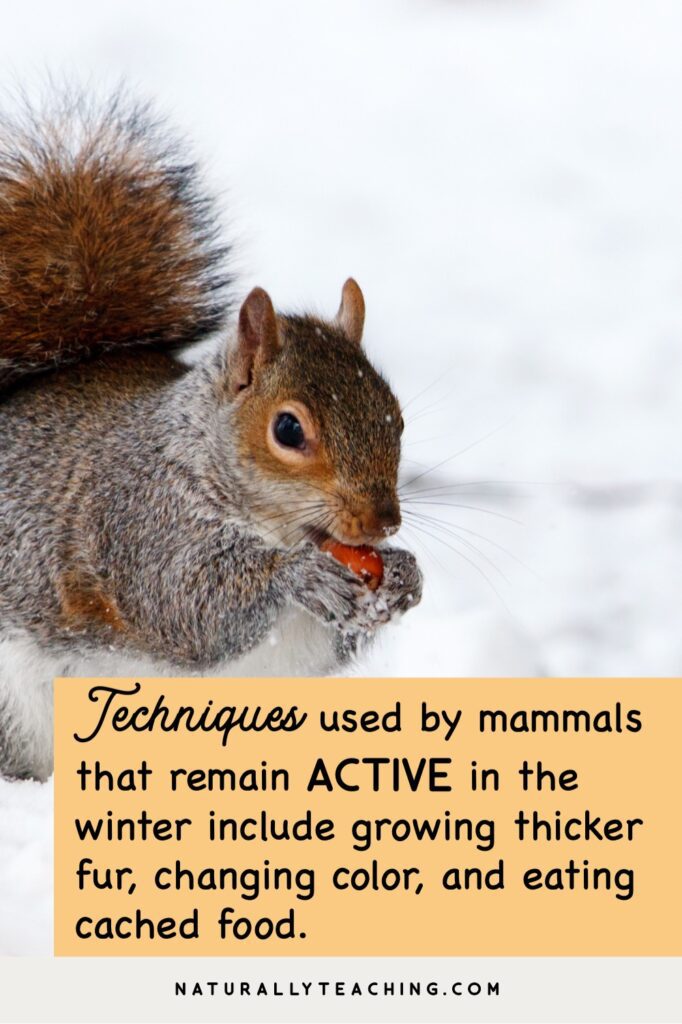
Other mammals, like the Eastern Chipmunk, use a modified form of dormancy known as torpor. In this state, the animal lowers its metabolic functions for a shorter period of time and can be disturbed by predators, warm weather, or the need to do the deed. Chipmunks spend time in the fall preparing for their winter slumber by filling a chamber in their burrow with food so they can wake up in the winter to get a snack and return to their torpor.
Contrary to popular belief, bears are not hibernators, they are actually torpor-ers. Bears will enter this state of dormancy and reduce their metabolic functions similarly to hibernators. However, a bear is able to awaken if they sense danger. They can also awaken to respond to the needs of their young. Female bears often have cubs in the winter and need to awaken to check on their well-being which would not be possible if they were hibernating.
Other winter survival techniques used by mammals that remain active in the winter include growing thicker fur, changing color, and eating cached food. Some mammals also migrate, like reindeer in the extreme latitudes of the Earth. There are even mammals that change their behavior such as the Northern and Southern flying squirrels which community nest in tree cavities during the winter.
Teaching about winter holds so much value for your students while helping you fulfill your curricular goals. By teaching the season transition to winter, your students get to study the weather patterns of the season, practice their scientific skills, and see how nature is interconnected with real-life applications of new knowledge during place-based learning opportunities. Enjoy this wonderful season with its cold weather, stunning silence, and enjoyable holidays; it is sure to be one of your students’ most memorable times of the year!
Looking for activities to help you teach the winter season? Check out my winter seasonal resources with activities like a fall to winter sorting worksheet, a seasonal booklet, and an outdoor scavenger hunt!
Bibliography
Briggs, K. 2021, January 4. Enduring and Avoiding the Cold – How Reptiles and Amphibians Survive Northern Winters. Retrieved from https://www.weareiowa.com/article/weather/weather-lab/heres-why-its-often-so-windy-in-fall-winter-and-spring-des-moines-central-iowa/524-fbb13fbc-2734-4486-a97a-60a13967fc24
Do you have an amazing way that you spend your time teaching the season transition to winter? Include your favorite activities in the comments!
Looking for other articles about the seasons to help you teach weather all school year long? Check these out!
“A Helpful Introduction for Teachers Teaching the Four Seasons in School”
“A Helpful Guide to Teaching About Fall in Elementary School”
“A Helpful Guide to Answering the Question ‘What is the Spring Season?'”
10 thoughts on “A Helpful Guide to Teaching the Season Transition to Winter”